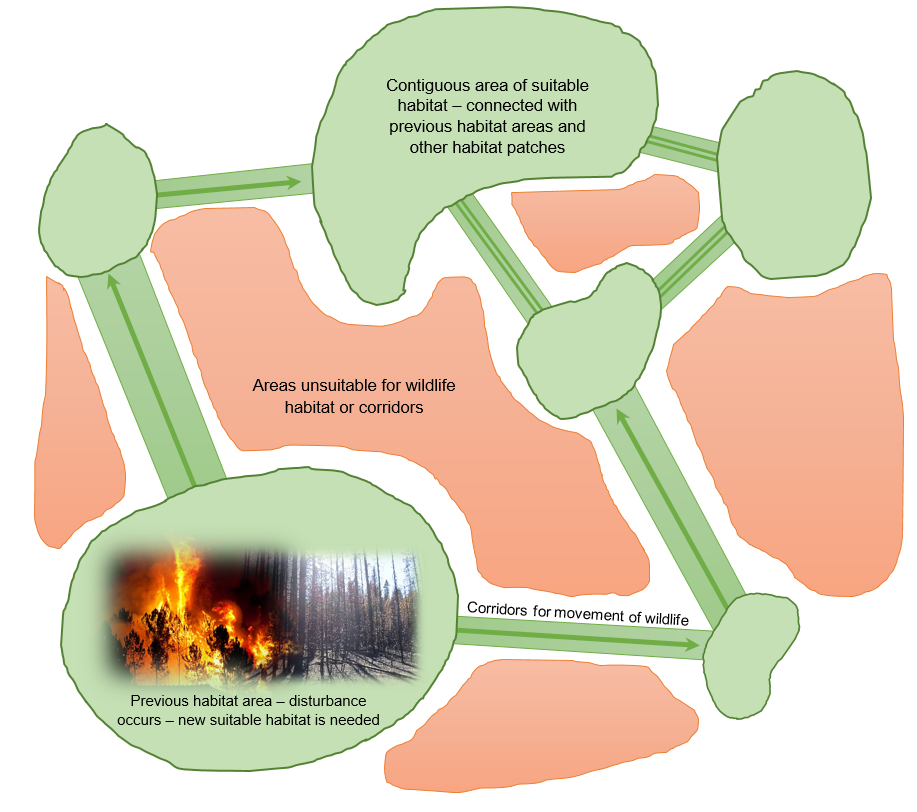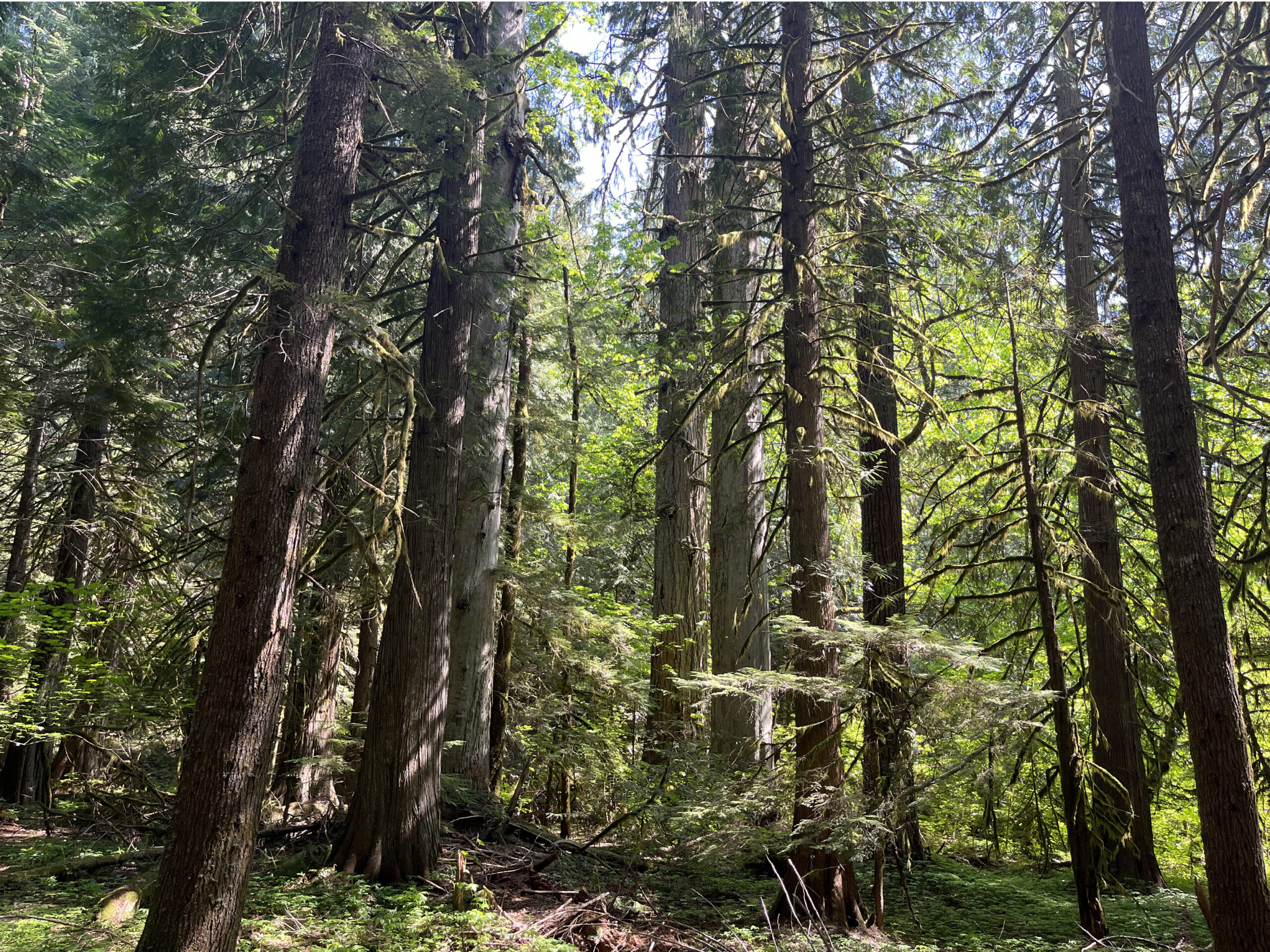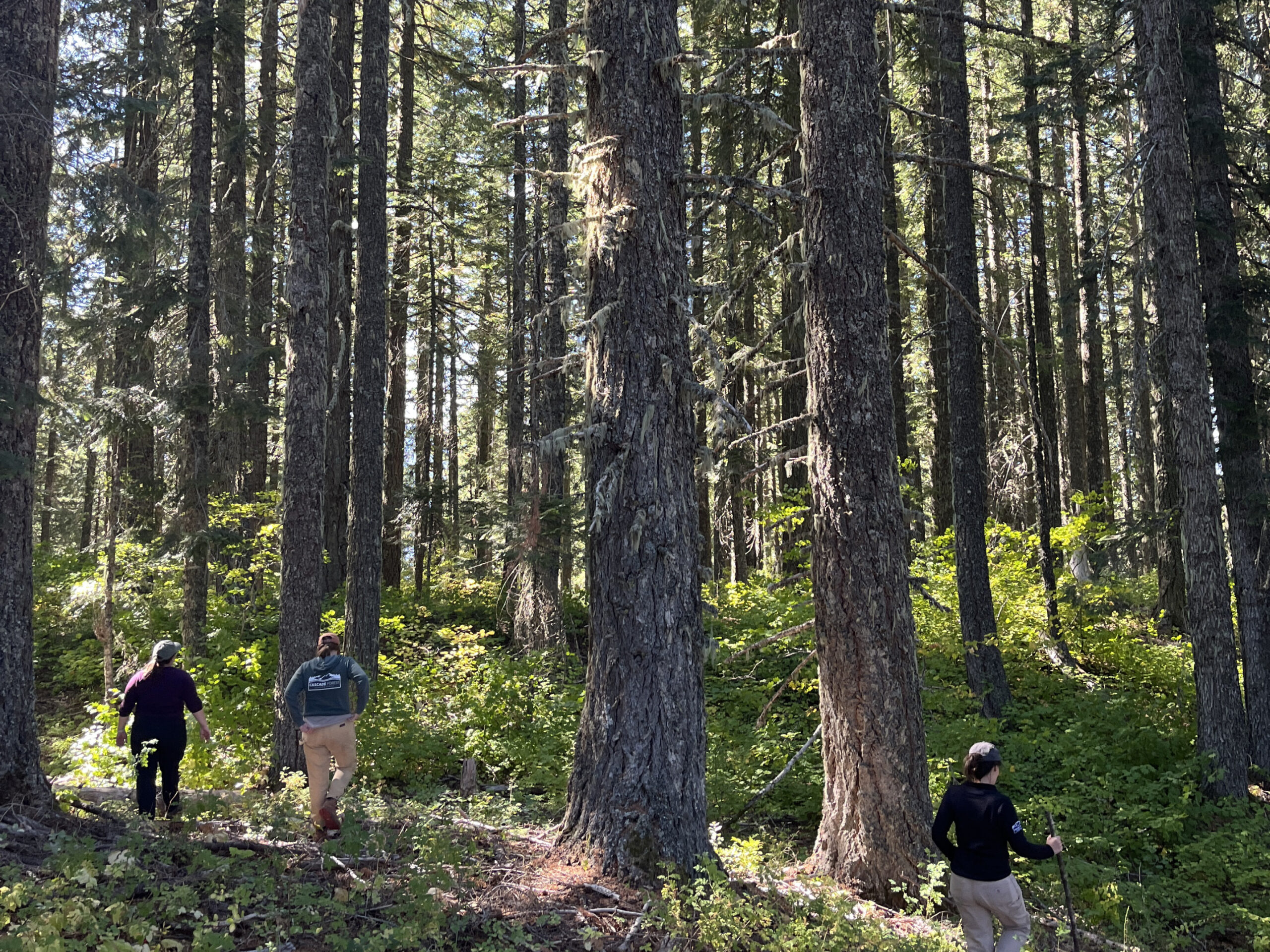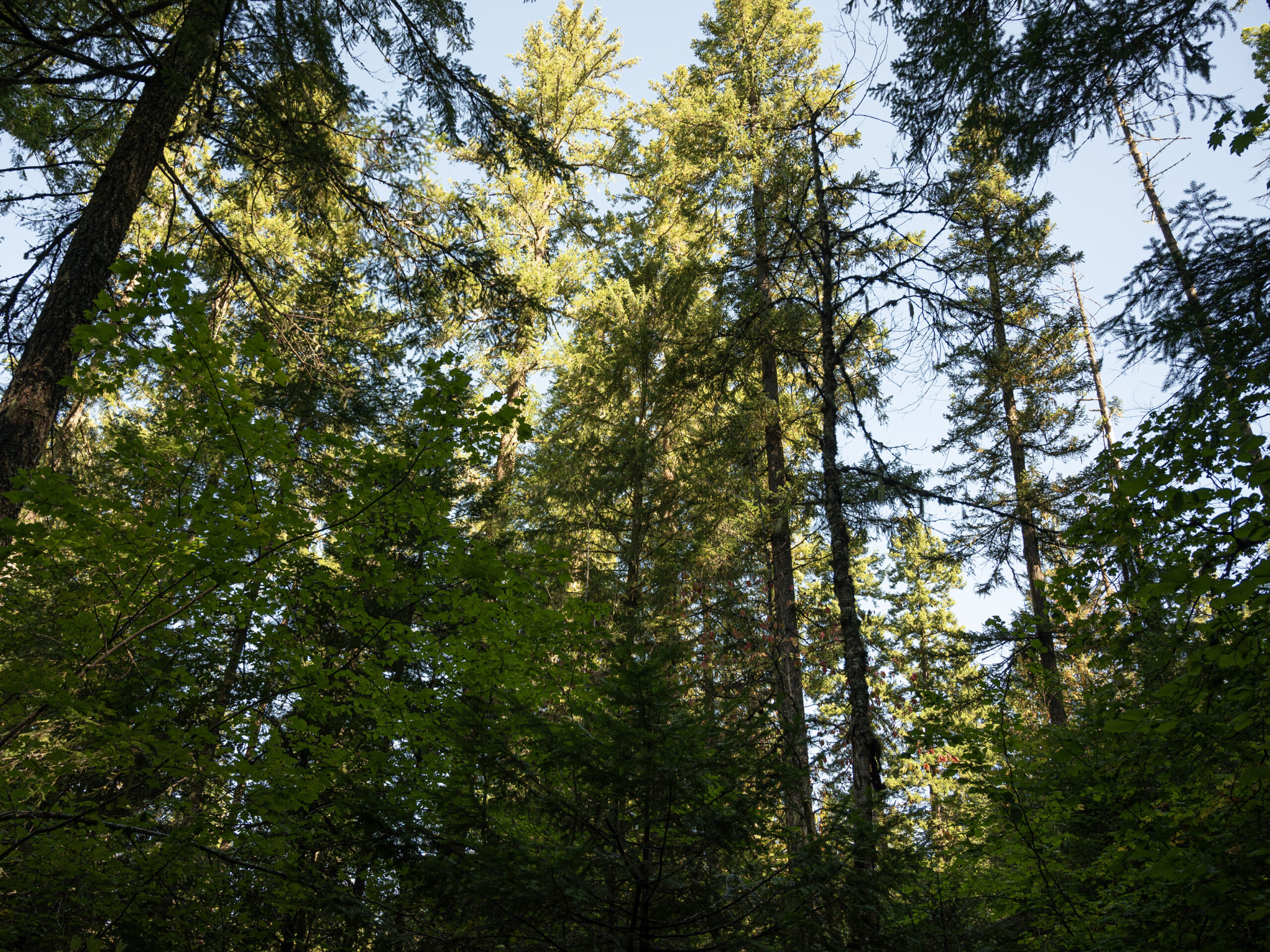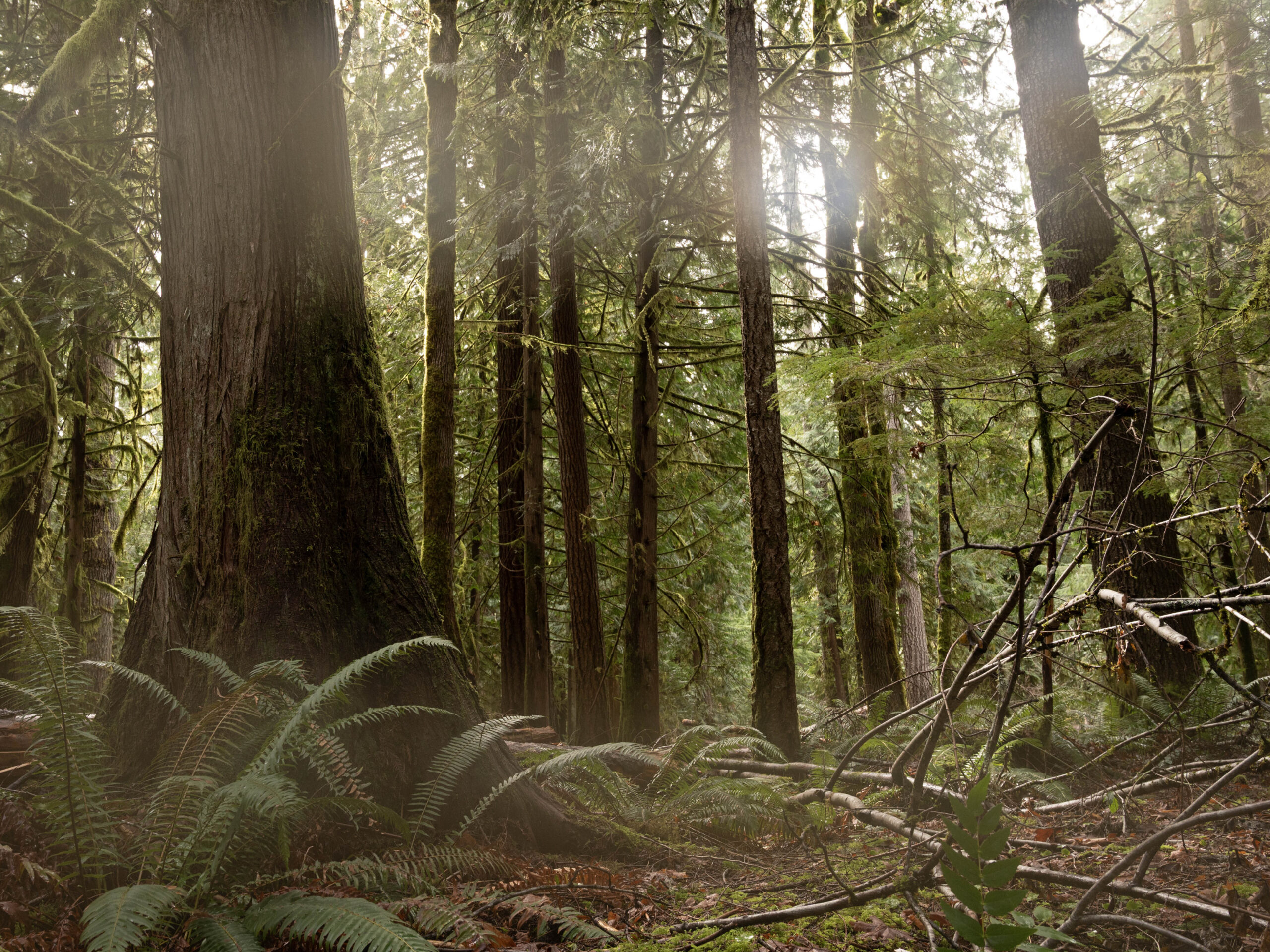[vc_row row_type=”row” use_row_as_full_screen_section=”no” type=”grid” angled_section=”no” text_align=”left” background_image_as_pattern=”without_pattern” css_animation=””][vc_column][vc_empty_space][vc_column_text]Connectivity is the ability of wildlife to move throughout the landscape and to access important patches of habitat. Connectivity can be impacted by roads, logging, development, changes in habitat type, and climate impacts on forests, streams, or species. Fragmentation of wildlife habitat and shifting plant and animal populations as a result of climate change will put the wildlife of the Pacific Northwest at risk. Understanding habitat connectivity and planning conservation actions accordingly is one of our goals at the Cascade Forest Conservancy, and can help mitigate climate impacts and help local ecosystems adapt. CFC’s Wildlife and Climate Resilience Guidebook (found here) outlines connectivity needs and highlights strategies for improving ecosystem resilience.
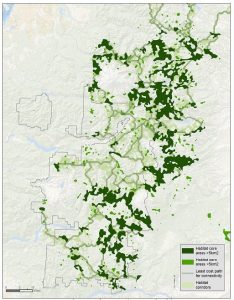 Connectivity represents the critical arteries sustaining the ecosystem. Robust connectivity throughout the landscape makes wildlife populations more resilient to climate impacts by allowing movement to alternate habitat areas and decreasing the degree to which disturbance in a particular habitat patch affects the overall viability of the population. As forest ecosystems move due to climate change, oftentimes shifting to higher elevations and northward, this forces species migrations and population shifts. These changes will be exacerbated and sometimes caused by local disturbances like wildlife or drought, and by the decoupling of species relationships. For example, as certain wetland vegetation disappears, the bird and insect species that depend on them also suffer and become scattered in distant patches. We must provide room to allow species and population movements to occur and not be hindered by geographic bottlenecks.
Connectivity represents the critical arteries sustaining the ecosystem. Robust connectivity throughout the landscape makes wildlife populations more resilient to climate impacts by allowing movement to alternate habitat areas and decreasing the degree to which disturbance in a particular habitat patch affects the overall viability of the population. As forest ecosystems move due to climate change, oftentimes shifting to higher elevations and northward, this forces species migrations and population shifts. These changes will be exacerbated and sometimes caused by local disturbances like wildlife or drought, and by the decoupling of species relationships. For example, as certain wetland vegetation disappears, the bird and insect species that depend on them also suffer and become scattered in distant patches. We must provide room to allow species and population movements to occur and not be hindered by geographic bottlenecks.
CFC designed a region-wide connectivity analysis to assist in conservation planning and to help prioritize resilience-building efforts for species that live in old forest habitats. Our analysis identified core habitat areas and potential connectivity corridors. The parameters we set are broad enough to encompass many species yet focused enough to be effective for the individual conservation needs of each one. The species we considered for this connectivity analysis included: fisher, northern spotted owl, marten, northern flying squirrel, and pileated woodpecker. While the particular habitat needs and preferences of each species varies, there are commonalities and it is in this area of common ground where we focused our analysis.
Mapping these patterns is an important step in understanding the need for and placement of habitat corridors and the areas where efforts are needed to protect, sustain, and improve connectivity. Although not explicitly modeled, this connectivity analysis should also provide connectivity for plants, insects, and other wildlife that depend on mature forest habitat. Moreover, the species we focused on often serve as dispersers of seeds and can therefore support plant populations and improve resilience through their distribution.
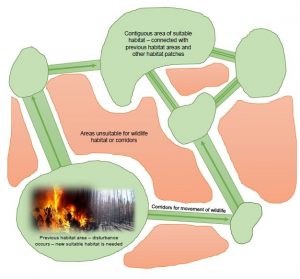
If you are interested in learning more about habitat connectivity, download our Wildlife and Climate Resilience Guidebook [here], or go on one of our summer stewardship trips with CFC Conservation Science Director Shiloh Halsey![/vc_column_text][/vc_column][/vc_row][vc_row row_type=”row” use_row_as_full_screen_section=”no” type=”grid” angled_section=”no” text_align=”left” background_image_as_pattern=”without_pattern” css_animation=””][vc_column][vc_empty_space height=”35px”][vc_column_text]
By Matt Little
[/vc_column_text][/vc_column][/vc_row][vc_row row_type=”row” use_row_as_full_screen_section=”no” type=”full_width” angled_section=”no” text_align=”left” background_image_as_pattern=”without_pattern” css_animation=””][vc_column][/vc_column][/vc_row][vc_row row_type=”row” use_row_as_full_screen_section=”no” type=”full_width” angled_section=”no” text_align=”left” background_image_as_pattern=”without_pattern” css_animation=””][vc_column][vc_empty_space][/vc_column][/vc_row]



